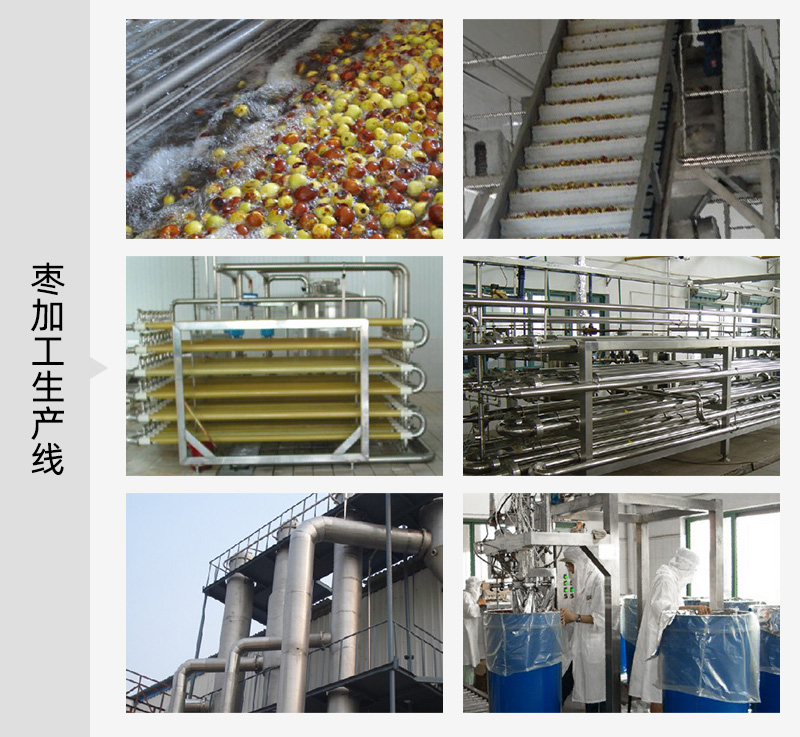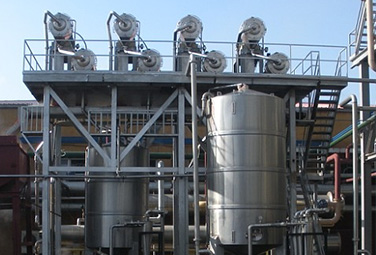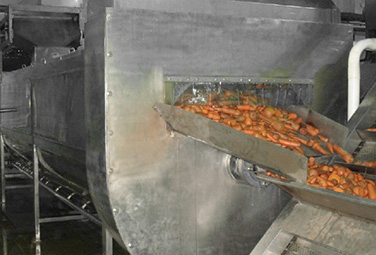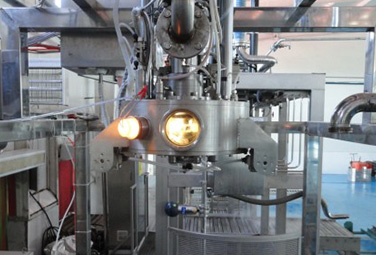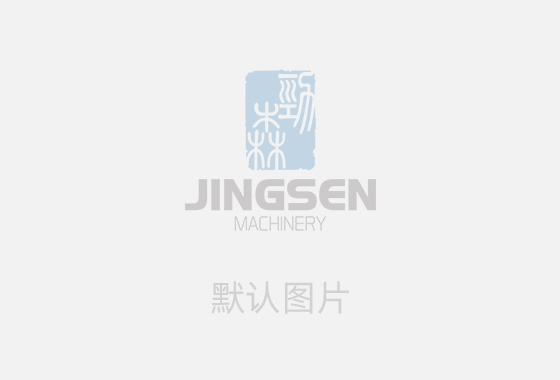Process 1: Acceptance of raw and auxiliary materials
The Procurement and Supply Department is responsible for conducting a census of the raw material production areas in April, June, and July each year. Soil samples are collected in April, and jujube samples are collected in June and July for pesticide residue testing by the laboratory. The Procurement and Supply Department evaluates qualified suppliers based on the quantity of supply and the laboratory's inspection results. Qualified suppliers should have a "Pesticide Residue Census Qualification Certificate". When the raw materials enter the factory, the weighing officer checks the "Pesticide Residue Census Qualification Certificate" of each vehicle of raw materials. Red dates without this certificate are rejected and recorded. The quality inspector of red dates shall inspect the dates in accordance with XXX/ISO C-GL-XXX-XX-XXX "Red Date Purchase Procedure" and XX/ISO C-XX-XXX-XXX-XXX "Red Date Quality Inspection Method". The qualified dates shall be put into the fruit trough, and the unqualified dates shall be sorted out of the factory and then purchased or rejected.
After the sterile bags, liquid bags or tank containers, and enzyme preparations and other auxiliary materials enter the factory, the second department of procurement and supply promptly entrusts the technical quality inspection department to conduct inspections. After passing the inspection, they are allowed to enter the warehouse. Packaging materials are stored at room temperature and used according to the principle of first in, first out; Enzyme preparations are stored in a refrigerated warehouse at 0-5 ℃, and are used according to the principle of first in, first out. After cleaning materials, disinfectants, and other auxiliary materials enter the factory, the second department of procurement and supply promptly entrusts the quality inspection department for inspection. After passing the inspection, they are stored in a classified manner and clearly labeled.
Process 2: Fruit trough
Lightly unload the accepted red dates into the fruit slots one by one according to the slot numbers (1-5), ensuring that there are no rope ends, packaging materials, or other debris in the dates, and keep records of the storage capacity of each fruit slot. During workshop production, the red dates in the fruit lees should be used correctly according to the order of incoming goods in the fruit troughs and the principle of first in, first out. The hygiene of the fruit trough and surrounding environment is the responsibility of the loading and unloading workers, who must wash it every day and keep it clean and hygienic all day. On duty jujube quality inspection is responsible for implementation.
Process 3: Primary conveying and cleaning
The first level pit picker in the production department uses circulating water from the first level pit to transport the red dates from the pit to the first level pit according to the order in which they enter the pit. During this circulation process, the red dates are fully soaked and cleaned. At the same time, some heavier substances (mud, stones, metals, etc.) sink into the settling pit, pass through a barrier, and separate the water from the red dates. The red dates enter the second level conveying channel, and the water flows into the first level circulation pool, The pump continues to circulate and transport red dates into the fruit trough. Spray and clean the jujube with tap water/soft water at the first level pit barrier. The circulating water in the first level pit uses tap water every day when it is turned on. During the production process, the excess circulating water in the second level pit is continuously replenished and enters the first level pit. The excess circulating water in the first level pit is directly discharged to maintain the cleanliness and hygiene of the circulating water in the first level pit.
Requirements:
1. Ensure first in, first out of red dates.
2. Ensure a spray pressure of 3BAR and ensure that all spray ports are unobstructed.
3. Ensure that the water in the first level pit does not flow back into the second level pit.
4. The water of the primary conveying cleaning system shall be completely replaced once a day during Great Purge.
Process 4: Secondary conveying and cleaning
The jujube is transported from the beginning of the secondary conveying channel to the secondary pit using circulating water from the secondary pit. During this circulation process, the jujube is fully soaked and cleaned. After passing through a barrier, the water and jujube are separated, and the jujube enters the primary lifting process. The water flows into the secondary pit circulation pool, and is further pumped into the beginning of the secondary conveying channel to circulate and transport the jujube. The circulating water of the secondary pit uses tap water every day when it is turned on. During the production process, according to the water level of the secondary circulating water tank, the treated softened water is continuously replenished to the secondary circulating water tank. The excess circulating water from the secondary circulating water tank enters the primary pit to maintain the cleanliness and hygiene of the secondary pit circulating water.
Process 5: First level improvement
Use a first stage spiral elevator to lift the jujube to the sorting table. By adjusting the gearbox of the hoist, the raw material feeding amount is adjusted to ensure production needs.
Process 6: Picking
On the picking table, as the red dates roll, the moldy and rotten fruits, spoiled fruits, and impurities are picked out. This process ensures that the rotten fruit rate is controlled below 2% after picking. The red dates on the picking table are placed in a single layer, and each picking table ensures that there are at least one fruit picker per square meter. The selection team leader monitors the rotten fruit rate every 2 hours and keeps records. The selected raw materials and fruits enter the three-level conveying and cleaning process.
Process 7: Rotten fruit conveying
The impurities such as rotten red dates picked up by the sorting table are transported out of the workshop using a spiral elevator for non food use.
Process 8: Floating washing
During this circulation process, the red dates are flipped with the flow of water in the float washing machine, allowing them to be fully soaked and cleaned before entering the disinfection pool.
Process 9: Secondary improvement
At the end of the float washing machine, the raw materials are transported to the roller conveyor using a hoist, and the cleaning water is pumped back to the float washing machine for further circulation. At the same time, the cleaning water is separated from the raw materials.
10 Process: Disinfection
In the disinfection pool, the use of disinfectant (generally Chlorine dioxide) mainly kills acid and heat resistant bacteria and some microorganisms on the surface of jujube.
Process 11: Roller bar spray cleaning
The raw materials are washed with high-pressure spray water on the roller conveyor.
12 steps: three-level improvement
Use a three-level elevator to lift the jujube to the crusher.
Process 13: Crushing
Crush the cleaned red dates into 4-6 mm pulp using a Buchholz crusher (adjust the crushing size according to the maturity of the dates, with high hardness and small crushing size in the early stage, saccharification in storage, and large crushing size). It is required to replace the crusher screens in the first, middle, and last stages, using small, medium, and large screens respectively. Determine whether to add pectinase and its dosage or a temporary process notice based on the maturity of red dates. The fruit pulp is pumped into the fruit pulp heater through a stainless steel pipeline.
Process 14: Fruit pulp heating
The fruit pulp is heated to 20-35 degrees Celsius through a fruit pulp heater to facilitate enzymatic decomposition and squeezing of the pulp, thereby increasing the juice yield. The use of a fruit juice heater depends on the temperature of the fruit juice.
Process 15: Temporary storage of fruit pulp
After heating and adding enzymes, the fruit pulp is pumped into a fruit pulp tank through a pipeline, and retained for a certain period of time to fully enzyme the fruit pulp and improve the juice yield. There are two fruit pulp tanks, one for enzymatic hydrolysis of fruit pulp, and the other for normal production. The enzymatic time must be greater than 30 minutes.
Process 16: Pressing
Use the Buchholz HP5005i squeezing machine to press the crushed fruit pulp. After pressing, the juice enters the primary filtration process, and the fruit residue is extracted with water and subjected to secondary pressing in this machine.
BUCHER: One press: Filling capacity: 8-11 tons/h
Pressing time: 50-60min
Juice production rate: 80-85%
Second squeezing: water addition: fruit residue: soft water=1:1
Enzymatic hydrolysis time: greater than 30 minutes
Set juice yield:>50%
Pressing time: 30-40 minutes
Process 17: Primary filtration
The squeezed fruit juice is filtered through a rotary filter to remove large particles of non water-soluble pulp and fruit residue. The filtered fruit juice enters the first pasteurization process. During daily cleaning, the integrity of the primary filter screen is visually inspected and recorded.
Process 18: Fruit residue discharge
The fruit residue after secondary pressing is sent out of the workshop by a screw conveyor, continuously discharged, and transported out of the factory for non food purposes (feed, etc.)
Process 19: Temporary storage of raw juice
The first stage filtered raw juice is pumped to the raw juice temporary storage tank (2 raw juice tanks, one to ensure normal production, and one for cleaning and standby)
Process 20: Pre Pasteurization
The fruit juice is maintained in a pasteurization device at 98 ± 2 ℃ (or according to a temporary process notice) for 30 seconds to kill bacteria (but not spores), inactivate the inherent enzymes in the jujube, and gelatinize the starch contained in the jujube. The pre pasteurized fruit juice enters the cooling plate through a pipeline and quickly cools to 50-53 ℃ before being sent to the enzymatic clarification tank through a pipeline.
Process 21: Enzymatic hydrolysis clarification
Under the action of Pectinase and Amylase, the fruit juice can decompose the pectin and starch in the fruit juice into soluble small molecular substances (to prevent the fruit juice from sedimentation and turbidity). The concentration of the enzyme, the temperature and time of enzymolysis vary with the quality of the red jujube. Generally, the temperature and time of enzymolysis are 50-53 ℃ and 90 minutes respectively. The juice after enzymolysis is pumped to the ultrafiltration circulating tank through the secondary filtration device.
Requirements (or execution of temporary process notification requirements):
(1) Temperature: 50-53 ℃;
(2) Enzymatic hydrolysis time: 90 minutes
(3) Enzyme addition time: When the liquid level in the hydrolysis tank reaches the axial position of the stirrer, enzyme addition begins;
(4) The Chief Engineer's Office shall issue enzyme hydrolysis process orders to the Production Department and Technical Quality Inspection Department based on the raw material situation and experimental results of red dates;
(5) The clarification station operator of the Production Department shall add enzyme according to the requirements of the process notice, and notify the analyst of the full time of the tank after the tank is full.
(6) 70 minutes after the tank is full, the laboratory technician takes samples to test pectin and starch. If there is any abnormality, immediately notify the production department to clarify the station operator and report to the quality controller on duty.
(7) The clarification station operator of the Production Department can proceed to the next step after receiving the notice from the laboratory.
Process 22: Secondary filtration
The secondary filtration device is a filter installed on the pipeline between the enzymatic hydrolysis tank and the ultrafiltration circulation tank, with a pore size of about 1.5mm, to remove possible large pulp particles or other impurities. During daily ultrafiltration cleaning, the integrity of the filter is visually inspected and cleaned once with the naked eye, and records are kept.
23 Process: Ultrafiltration
The pore size of the ultrafiltration membrane is 0.02? m. After ultrafiltration, water insoluble substances and molecules greater than 0.02 are removed from fruit juice? M substances (including microorganisms) and possible impurities such as metal debris. The ultrafiltration juice is pumped through pipelines to the clear juice temporary storage tank.
Requirements:
(1) 50 ℃<circulating tank turbid juice temperature<53 ℃;
(2) The sugar content of ultrafiltration cloudy juice is less than 18BRIX;
(3) During normal production, the liquid level in T4 tank is>60%;
(4) Solid content<30%; When the solid content is>30%, start adding soft water to extract sugar. Ultrafiltration operators send samples to the laboratory once per shift to detect solid content;
(5) Extraction sugar content<5Brix;
(6) If the turbidity of ultrafiltration clear juice is less than 0.4NTU, if the indicators do not meet, ultrafiltration will be circulated until the indicators are qualified before discharge.
(7) UF inlet pressure 3.2-5.5bar; Outlet pressure 0.9-1.6 bar;
(8) 20%<liquid level in the clear juice temporary storage tank<70%;
(9) The storage time of clear juice in the temporary storage tank shall not exceed 1 hour. If it exceeds 1 hour, the physical and chemical laboratory personnel shall test the indicators, and if it is not qualified, it shall be filtered again.
(10) After the ultrafiltration is activated, notify the laboratory technician to sample and test the clear juice indicators. The laboratory technician tests the physical and chemical indicators of the ultrafiltration outlet juice every 2 hours.
Process 24: Sugar extraction
When the solid content in the ultrafiltration circulating liquid reaches 30%, soft water should be added to the ultrafiltration circulating liquid to extract the sugar content in the circulating liquid below<5BX. The juice is pumped through pipelines to the resin adsorption process, and the retained solids are directly discharged.
Process 25: Solid discharge
After the ultrafiltration sugar extraction is completed, press the automatic slag removal button to discharge the intercepted solids from the circulation system.
Process 26: Adsorption
After removing tannins and phenolic substances from the juice through resin adsorption, the juice is pumped to the fourth stage filtration process.
Requirements for decolorization resin: (1) Three sets of adsorption columns, one set for operation, one set for regeneration, and one set for backup.
(2) Adsorption endpoint clear juice index: color &#118alue>65%;
Requirements for deacidification resin adsorption: Two sets of resins, one for operation and the other for regeneration.
Adsorption endpoint clear juice index:
Acidity:<0.04%
Color: Water White
27 Process: Four stage filtration
After resin adsorption, the fruit juice is removed with a 50um metal filter to remove possible resin particles or other impurities. The juice that passes through is pumped through a pipeline to the evaporation and concentration process. Open the filter to visually inspect the integrity of the fourth stage filter once a week during Great Purge, and make records.
Process 28: Evaporation concentration
Using a 10TGEA four effect six stage falling film evaporation device, the water in the fruit juice is evaporated and separated. The condensed water (i.e. soft water) is used as water for jujube cleaning, secondary extraction, and ultrafiltration sugar extraction to concentrate the fruit juice. The sugar content is concentrated from 9 to 18BX to 70.3 ± 0.2BRIX
Requirements:
(1) Four effect falling film evaporator:
First effect temperature: 96 ℃
Second effect temperature: 85 ℃
Triple effect temperature: 74 ℃
Four effect temperature: 55 ℃
(2) The concentrated fruit juice is quickly cooled to below 25 ℃ in a cooling plate by circulating cooling water and ice water.
(3) The physical and chemical laboratory personnel test the sugar content, acidity, color &#118alue, turbidity, transparency and other indicators of the four effect export juice every 4 hours, and visually inspect the color of the juice. The microbiological laboratory technician checks the TAB index of the exported concentrated juice every 12 hours.
(4) Sugar content: Control the export sugar content of the four effects at 70.3 ± 0.2 Brix
(5) Four effect outlet turbidity ≤ 2NTU;
(6) Cool the soft water to 50-53 ℃ and enter the soft water tank.
Process 29: Temporary storage of concentrated juice
The cooled product is pumped to a batch tank for temporary storage. When the liquid level reaches the mixer, stirring begins. The juice is mixed while entering, and when the tank is full, it is stirred evenly. The evenly mixed juice is treated as a batch and pumped through a pipeline to the cardboard filtration system. When the juice needs to be stored, it enters the cooling process.
Requirements:
(1) After opening the mixer in the batch tank, the production department sends samples every 4 hours, and the laboratory tests the sugar content, color &#118alue, and turbidity indicators of the concentrated juice.
(2) After the batch of tanks are filled, the laboratory personnel conduct testing according to internal control indicators, and the microbiological laboratory personnel test the indicators of acid and heat resistant bacteria for each tank.
(3) The laboratory technician in the central laboratory samples methamidophos, Aspergillus clavatus toxin, fumaric acid and lactic acid in batches of juice cans once a day;
Process 30: Cooling
When concentrated juice needs to be stored, the juice that has been cooled to around 25 ℃ is cooled again to around 5-10 ℃ through a heat exchanger, and then pumped through a pipeline to a storage tank.
Process 31: Refrigeration
Refrigerate the products entering the storage tank in a cold storage room below 5 ℃. When filling is required, the juice is pumped through a pipeline to the batch tank.
Process 32: Second Pasteurization
Maintain the juice entering the second pasteurization device at a temperature of 96 ± 2 ℃ (or as required by the temporary process notice) for more than 6 seconds (by controlling the pump speed to ≤ 1500r/h) to kill bacteria, coliforms, and pathogenic bacteria. At this step, the reduction of pathogenic bacteria can reach a 5-log reduction. (But it cannot kill spores), the sterilized fruit juice is quickly lowered to below 20 ℃ by pipeline into the cooling device, and then sent to the fifth level filtration process by pipeline.
33 Process: Five stage filtration
The fifth level filtration is a 300 mesh metal pipeline filter installed on the pipeline to intercept potential impurities, and the juice passing through the pipeline enters the sterile filling process. Visually inspect the integrity of the filter every time it is cleaned and make a record.
Process 34: Sterile filling
This process uses an FBR aseptic filling machine, and the concentrated fruit juice is transported through pipelines to the aseptic filling machine. The fruit juice is filled into aseptic bags (with protective bags and steel drums on the periphery) using sterilization conditions with a filling head chamber temperature of ≥ 95 ℃. The filling weight is controlled by a mass flow meter.
Requirements:
(1) Offline product temperature: ≤ 25 ℃
(2) Net weight of filling: Iron bucket: 275 ± 0.5% kg
(3) Batch quantity regulations:
Each batch of concentrated red jujube juice with decolorization and deacidification must be filled with 144 barrels.
(4) Packaging: The filling station operator is responsible for checking the packaging before filling to ensure that the packaging is complete, clean, tidy and sanitary.
(5) Check the juice packaging for leaks, dirt, and foreign objects.
(6) Fill sample bags according to laboratory requirements.
(7) The filling station operator must spot check the filling weight of each batch.
(8) The finished product warehouse keeper randomly checks the appearance of the product packaging.
(9) Sampling ratio: 2% N (N represents the number of barrels), which must include the first and last barrels during the sampling.
Process 35: Labeling and lead sealing
After each barrel is filled, wipe off any water droplets on the surface of the sterile bag with a clean towel dipped in 75% alcohol. After passing the inspection by the operator, fold the sterile bag and protective bag, cover the barrel lid, and seal the packaging with lead. Stick a label inside the identification box on the outer wall of the steel drum.
Process 36: Storage
The packaged products are stored in a clean and hygienic warehouse with a temperature of ≤ 5 ℃, and there are clear identification plates at the product stacking points
37 Process: Factory inspection
Before the product leaves the factory, the Marketing Department 2 visually checks whether the packaging is clean and hygienic, the iron barrel body and lid should be flat, without paint peeling, damage, rust, scratches, or dirt; Check if there are any damages to the packaging, juice leakage, complete barrel rings and lead seals, clear handwriting on the labels, and proper positioning of unqualified products.
38 Process: Shipping
Package and load products that pass the inspection, have good lead seals and labels, and transport them out of the factory.
Production water The water sources used in the production of concentrated jujube juice are tap water and well water, which comply with the drinking water hygiene standards of the China and the laws and regulations of other countries. Pure water is used for cleaning equipment, which is water filtered by reverse osmosis from tap water and well water; Soft water is the evaporated condensed water of jujube juice. Soft water and pure water meet the hygienic standards of the China for drinking water.

